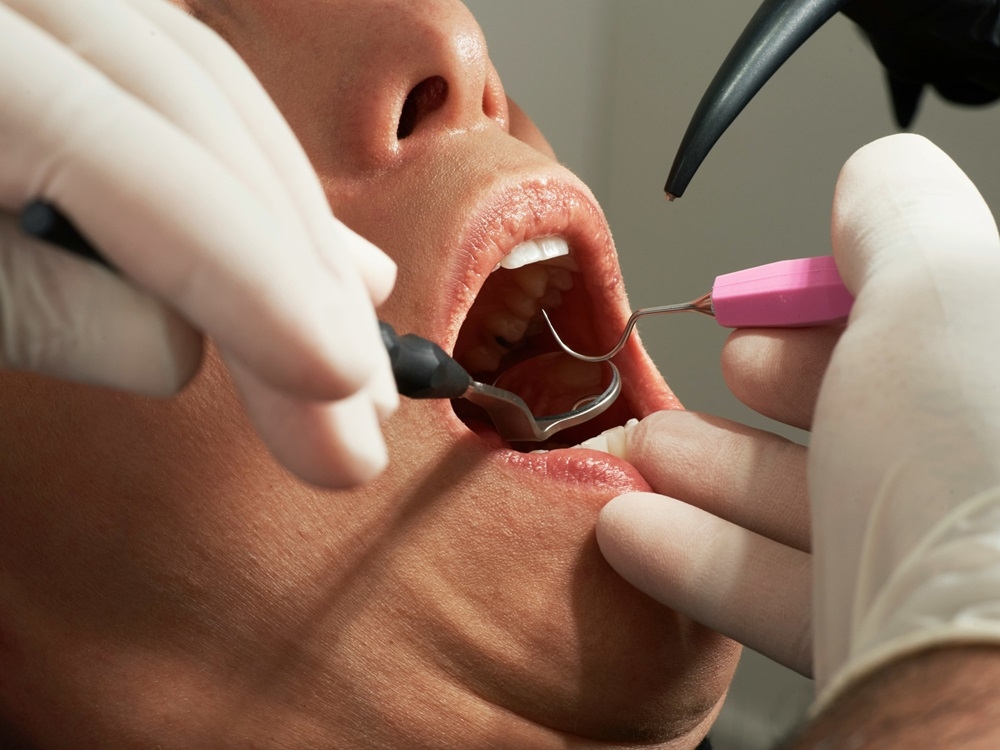JANUARY 27 — Remember the story of the Six Million Dollar Man? Fatally injured pilot Steve Austin after an airplane crash was rebuilt with metallic implants which made him a superhuman with bionic abilities. The cost was six million dollars — hence the name.
With or without a plane crash, we often damage or lose our teeth and opt for rebuilding. Dentists call it “dental restoration” where a damaged tooth is repaired, or a missing tooth is replaced. For the restoration, they use metals and a few other materials — expected to be biocompatible and nontoxic to our health.
Although dental restoration cannot make a bionic tooth, but it can give a normal functioning bite. After restoration, the tooth at best will look, feel, and work like a natural one and provide the ability not for a bionic but a normal bite.
Dental restoration relies heavily on metals, often precious ones. Depending on the money one can spend and the scope of the restoration some could have a partially golden tooth. Various metals and their alloys are used for the filling of cavities and the construction of orthodontic appliances, crowns, bridges, and partials.
Advertisement
In dentistry, amalgam is a liquid mercury and metal alloy mixture that is used to fill cavities caused by tooth decay. An amalgam is a mixture of liquid mercury and a combination of other metals. Metals such as chromium, nickel, cobalt, silver, gold, titanium, tin, and zinc are commonly used in dental restorations alongside mercury.
Despite its history dating back to the Tang dynasty medical text written by Su Gong in 659, amalgam became the dental restorative material of choice due to its low cost, ease of application, strength, and durability since the 1800s.
The mercury content in dental amalgam has been a source of recurrent controversies due to its potentially toxic effects on human health. The awareness of health hazards caused by the release of mercury from dental amalgam has become common knowledge. Some of the attributed health issues include, but are not limited to, autism, Alzheimer’s, Parkinson’s, and amyotrophic lateral sclerosis, as well as symptoms like depression, insomnia, irritability, mental instability, and anxiety associated with mercury exposure.
Advertisement

If you need to have a dental restoration, you should ask for a metal-free product. — Unsplash pic
Besides, electrolytes, i.e., minerals that carry charges such as sodium, potassium, and chloride in saliva, exert a battery effect between two or more dissimilar metals that are present in amalgam and cause an electrical current known as oral galvanism. Oral galvanism can lead to various sensations such as metallic or salty taste, burning or tingling of the tongue, increased salivary flow, visible changes to the oral mucosa, occasional nerve shock or nerve sensitivity when touching the restoration with a metal utensil, or generalised discomfort in the mouth including trigeminal neuralgia.
In 2013, the Minamata Convention on Mercury adopted policies to protect human health and the environment from anthropogenic emissions and releases of mercury. The Convention recommended phase-down mercury-containing amalgam use. The initial roadmap to phase down dental amalgam involves a strategic shift towards more environmentally friendly and health-conscious alternatives.
As stipulated during the Minamata Convention, the manufacture and import of amalgam shall cease by 2027. However, the EU Member States proposed to make the deadline earlier by 2024. Despite holding up with the Minamata Convention on Mercury, the Malaysian Dental Council supports the use of dental amalgam usage until an alternative material that matches or exceeds all the characteristics of dental amalgam becomes available.
To successfully phase down dental amalgam, there must be a greater emphasis, increased research on amalgam alternatives, and best management practices for amalgam waste.
Alternatives of dental amalgam, in other words, making a metal-free dentistry are gaining traction. Biocompatible ceramic, zirconia, and composite resins are being used as amalgam alternatives.
If you need to have a dental restoration, you should ask for a metal-free product. However, if you already have metal dental restorations in your mouth, find an expert opinion for as safe removal of these metal dental restorations.
* Dr Noor Azlin is an Associate Professor at the Department of Restorative Dentistry, Faculty of Dentistry; while Dr Mohammad is an Associate Dean (Continuing Education) at the Faculty of Dentistry, and Associate Member, UM LEAD, Universiti Malaya.
** This is the personal opinion of the writer or publication and does not necessarily represent the views of Malay Mail.







